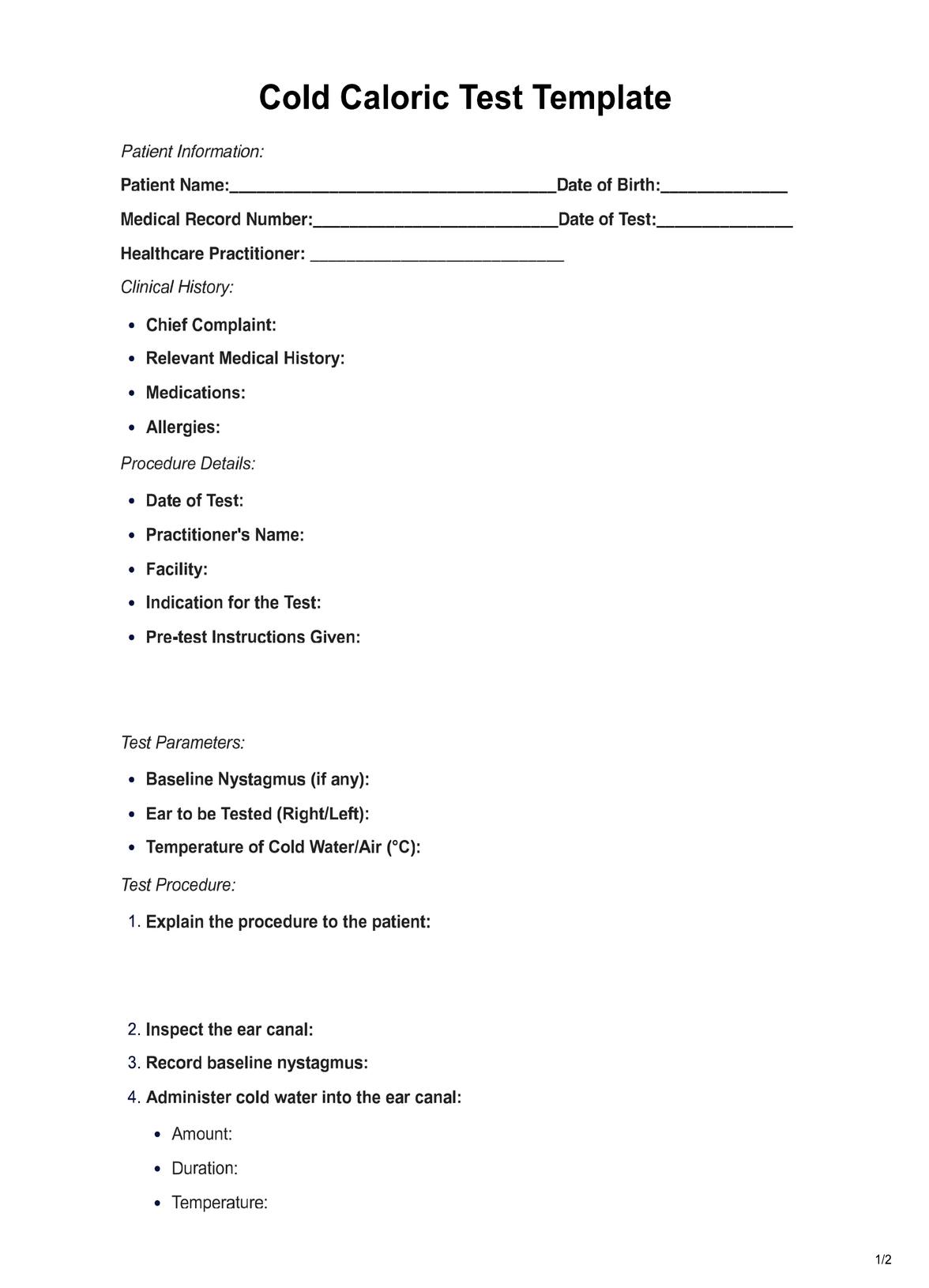This test is performed to diagnose and evaluate various vestibular disorders, such as Meniere's disease, vestibular neuritis, benign paroxysmal positional vertigo (BPPV), and other conditions that affect balance and cause vertigo or dizziness.

Cold Caloric
Learn how the Cold Caloric Test assesses inner ear function & balance with controlled temperature stimulation.
Use Template
Cold Caloric Template
Commonly asked questions
During the test, cold water or air is gently introduced into the ear canal, which affects the temperature of the inner ear's endolymph fluid. The resulting nystagmus is observed, and its characteristics (direction, onset, duration, and intensity) are recorded.
The test is generally not painful, but it can cause some patients discomfort and temporary dizziness or vertigo. However, these sensations usually resolve quickly after the test.
EHR and practice management software
Get started for free
*No credit card required
Free
$0/usd
Unlimited clients
Telehealth
1GB of storage
Client portal text
Automated billing and online payments











